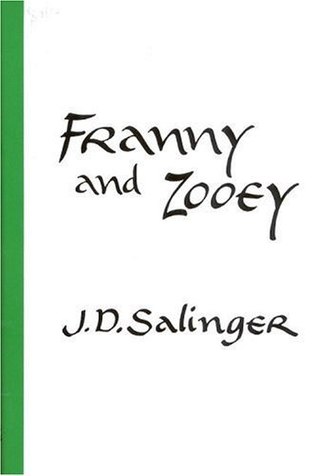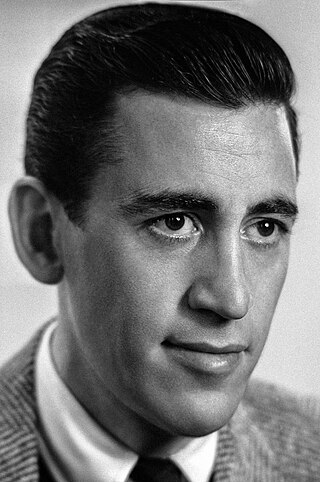Sources
- Slawenski, Kenneth. 2010. J. D. Salinger: A Life. Random House, New York. ISBN 978-1-4000-6951-4
| "Two Lonely Men" | |
|---|---|
| by J. D. Salinger | |
| Country | United States |
| Language | English |
| Published in | Unpublished |
"Two Lonely Men" is an unpublished short story by J. D. Salinger.
The story is told from the point of view of a narrator who is a professional short story writer now working as a Morse Code Instructor. The setting is an Army base in Georgia, where the narrator details the developing friendship of two officers. One, a Captain, has a wife who visits and subsequently describes an affair she had while he was stationed. At the close of the story, the Captain approaches the narrator and tells him he has requested a transfer, because he now does not like the other officer.
The story was written in 1944, [1] while Salinger was stationed at Bainbridge Air Base, Georgia. A 27-page, dated manuscript is available at Princeton University's Firestone Library, part of the library's Story magazine archives. [2] Copies of the story are not permitted.

The Catcher in the Rye is an American novel by J. D. Salinger that was partially published in serial form 1945–46 before being novelized in 1951. Originally intended for adults, it is often read by adolescents for its themes of angst and alienation, and as a critique of superficiality in society. The novel also deals with complex issues of innocence, identity, belonging, loss, connection, sex, and depression. The main character, Holden Caulfield, has become an icon for teenage rebellion. Caulfield, nearly of age, gives his opinion on a wide variety of topics as he narrates his recent life events.

Holden Caulfield is a fictional character in the works of author J. D. Salinger. He is most famous for his appearance as the lead character and narrator of the 1951 novel The Catcher in the Rye. Since the book's publication, Holden has become an icon for teenage rebellion and angst, and is considered among the most important characters of 20th-century American literature. The name Holden Caulfield was initially used in an unpublished short story written in 1941 and first appeared in print in 1945.

Franny and Zooey is a book by American author J. D. Salinger which comprises his short story "Franny" and novella Zooey. The two works were published together as a book in 1961, having originally appeared in The New Yorker in 1955 and 1957 respectively. The book focuses on siblings Franny and Zooey, the two youngest members of the Glass family, which was a frequent focus of Salinger's writings.

Life After God is a collection of short stories by Douglas Coupland, published in 1994. The stories are set around a theme of a generation raised without religion. The jacket for the hardcover book reads "You are the first generation to be raised without religion." The text is an exploration of faith in this vacuum of religion. The stories are also illustrated by the author. Several critics have suggested that this publication marks an early shift in the stylistic vocabulary of Coupland and, according to one critic, he was "excoriated presumably for attempting be serious and to express depression and spiritual yearning when his reviewers were expecting more postmodern jollity". However, the short story would later come to garner more praise though critics and academics have paid little attention to the publication in terms of academics' articles and commentary.

"For Esmé—with Love and Squalor" is a short story by J. D. Salinger. It recounts a sergeant's meeting with a young girl before being sent into combat in World War II. Originally published in The New Yorker on April 8, 1950, it was anthologized in Salinger's Nine Stories two years later.
"The Ocean Full of Bowling Balls" is an unpublished work by J. D. Salinger. It is about the death of Kenneth Caulfield, who later became the character Allie in The Catcher in the Rye.
"Pretty Mouth and Green My Eyes" is a short story by J.D. Salinger, initially published in the July 1951 issue of The New Yorker, and later within the larger collection of Salinger's short works, Nine Stories. Over the span of a few telephone conversations, the story surrounds three adult characters and the remainder of their evening after leaving a party.
Gordon Lish is an American writer. As a literary editor, he championed many American authors, particularly Raymond Carver, Barry Hannah, Amy Hempel, Rick Bass, and Richard Ford. He is the father of the novelist Atticus Lish.
"The Hang of It" is a short story by J. D. Salinger, first published in the July 12, 1941 issue of Collier's magazine.
“The Varioni Brothers” is an uncollected work of short fiction by J. D. Salinger which appeared in the 17 July, 1943 issue of The Saturday Evening Post.
“Elaine” is an uncollected work of short fiction by J. D. Salinger which appeared in the March-April, 1945 issue of Story.
The Affair at Grover Station is a short story by Willa Cather. It was first published in Library in June 1900 in two installments, and reprinted in the Lincoln Courier one month later. The story is about a geological student asking an old friend of his about the recent murder of a station agent.
“This Sandwich Has No Mayonnaise” is an uncollected work of short fiction by J. D. Salinger which appeared in the October 1945 issue of Esquire. The story was published in the 1958 anthology The Armchair Esquire, edited by Arnold Gingrich and L. Rust Hills.

Jerome David Salinger was an American author best known for his 1951 novel The Catcher in the Rye. Salinger published several short stories in Story magazine in 1940, before serving in World War II. In 1948, his critically acclaimed story "A Perfect Day for Bananafish" appeared in The New Yorker, which published much of his later work.
“A Girl I Knew” is an uncollected work of short fiction by J. D. Salinger which appeared in the February 1948 issue of Good Housekeeping.
"The Last and Best of the Peter Pans" is an unpublished short story by J. D. Salinger.
The Magic Foxhole is an unpublished short story by J. D. Salinger.

Princeton University Library is the main library system of Princeton University. With holdings of more than 7 million books, 6 million microforms, and 48,000 linear feet of manuscripts, it is among the largest libraries in the world by number of volumes. The main headquarters of the university system is the Harvey S. Firestone Memorial Library building, named after tire magnate Harvey Firestone. Additionally, Princeton is part of the Research Collections and Preservation Consortium (ReCAP) along with Columbia Libraries, Harvard Library and New York Public Library.
“The Children’s Echelon” is an unpublished work of short fiction by J. D. Salinger written in 1944 when the author was serving in combat during World War II. The work was referred to as both “The Children’s Echelon” and “Total War Diary” in Salinger’s professional correspondence. It can be located in the Firestone Library in Princeton University.

Three Early Stories is a posthumous publication of American author J. D. Salinger, published in 2014, comprising three stories: "The Young Folks", "Go See Eddie" and "Once a Week Won't Kill You".